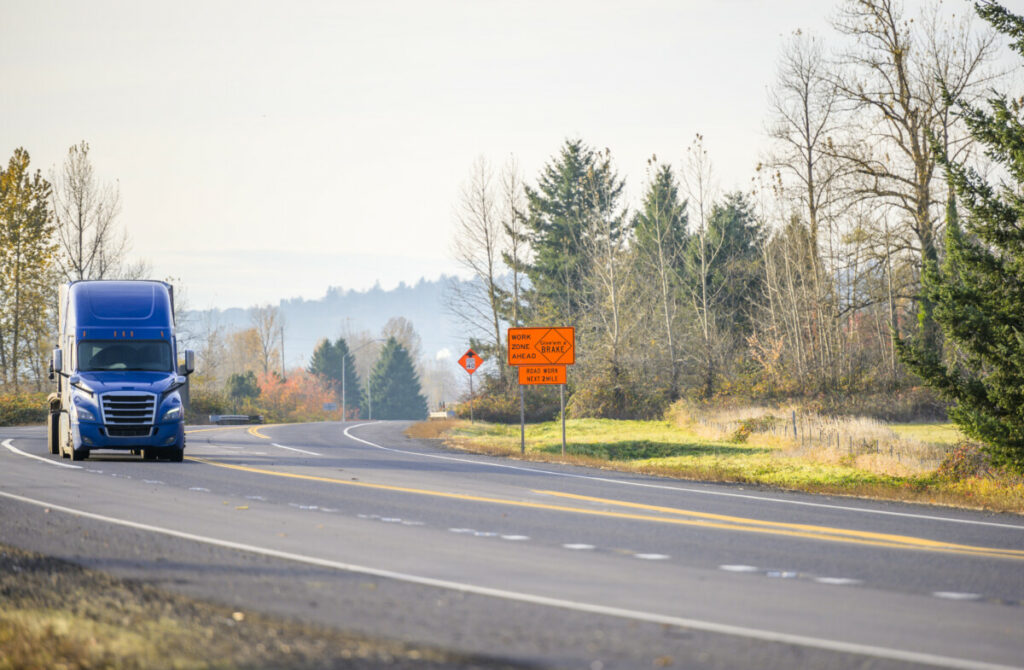Generally, to pull your fifth-wheel camper or RV, you’ll need a powerful pickup truck, but since semi-trucks are even more powerful than a regular pickup truck, shouldn’t a semi be able to pull a fifth-wheel with ease? We’ll answer all your questions regarding towing a fifth-wheel camper with a semi-truck.
Fifth-wheel RVs and campers can be towed with a semi-truck as long as the kingpin dimensions on both the camper and semi-match. Before towing, ensure that the towing levels of your camper and semi are similar, check the wiring for proper connection, and ensure good turning clearance.
To learn more about all the things you should check before towing your fifth wheel with a semi-truck, continue reading!
Fifth-Wheel Campers and RVs
Campers and RVs with built-in a fifth-wheel towing attachment are typically pulled by a three-quarter-ton truck with an 8-foot bed and a bed-mounted hitch. Fifth-wheel campers and RVs can weigh anywhere between 5,000 and 16,000 pounds, so the truck used to pull one needs to have a lot of weight and power for better towing capacity. Most trucks that pull a fifth wheel, especially those on the higher end of the weight scale, have similar specifications to a Ford F-250 or a Ram 2500.
Smaller fifth-wheel campers and RVs on the lower end of the weight scale can be pulled by lower-powered trucks like a Ford F-150 or Ram 1500, and even an SUV or van using an automated safety hitch attached to the pre-installed rear-mounted hitch.
These hitches are compatible with trucks with a shorter bed and are designed to extend the length of the trailer wheelbase, creating better stability. The automated hitch has an axle that steers automatically in the direction it senses your vehicle’s turn signal, then senses how much the vehicle is turning and automatically turns its wheels proportionally in the appropriate direction.
Semi-Trucks

Semi-trucks are generally designed for heavy-duty towing and transporting heavy loads. They aren’t typically used for towing campers or RVs, but when making the right accommodations based on size and weight load, a camper or RV with built-in fifth-wheel towing attachments can be towed with a semi-truck.
Because semi trucks can tow so much weight, an automated safety hitch is not necessary. Instead, a bed-mounted hitch can be installed onto the back bed of the semi-truck as long as the typical semi-truck trailer is detached. If a hitch is already installed onto the truck bed, a fifth wheel can be attached as long as the kingpins are compatible with your truck.
Just as you would tow your camper with a typical pickup truck, you must first know the weight of your camper and the towing capacity of the semi-truck before determining if it will be able to pull your camper.
A semi-truck without a trailer attached can weigh up to 35,000 pounds but have the capacity to efficiently and legally pull up to 80,000 pounds in the United States. The towing capacity varies by how many axles, which assist in turning radius and weight distribution, the semi-truck has. Single-axle semi trucks can tow up to 20,000 pounds, two axles can tow up to 34,000 pounds, and three axles can tow up to 80,000 pounds.
How to Tow a Fifth Wheel with a Semi-Truck

To ensure that the semi-truck you own or will be purchasing is compatible with towing your fifth-wheel camper, or vice versa, there are a few things you need to check on both the semi and fifth-wheel. This way, you can be sure that the rig combination between the semi and fifth wheel will work together safely before you begin your adventure.
First, you’ll need to check and compare the kingpin dimensions of both the semi-truck and your fifth-wheel camper. The kingpins of a fifth wheel are typically about 2 inches in diameter, and typical semi-truck built-in kingpins can be up to 3 1/2 inches in diameter. Be sure these dimensions match, or you won’t have enough power or maneuverability to tow your camper with the semi.
Next, you’ll want to ensure that the towing levels between the semi and the camper are similar so that your trailer can be pulled level to the road. If the camper is not level, this can cause swaying and is dangerous to other drivers traveling at high speeds. You can do this by measuring the distance from the ground to the hitch of your semi-truck and comparing this measurement to the distance from the ground to the fifth wheel’s pin box. Ensure that these measurements are the same or within a couple of inches in difference.
Third, you’ll have to ensure the wiring of your fifth wheel is compatible with your semi. This way, the brake lights will be visible to other drivers. It also ensures that your fifth wheel meets the safety requirements for driving on the road.
You’ll also want to ensure that the wiring between the semi and your fifth-wheeler can be properly connected. This can be done by manipulating the wiring of the electric drum brake controllers or using an appropriate adapter. Your mechanic or a local auto-shop employee can assist in this.
Lastly, you’ll want to ensure that the semi-truck and your camper have a similar clearance level. You’ll also want to calculate the turning clearance by following a simple equation. You’ll first measure the trailer width, divide this number by the distance between the semi cab and the fifth wheel, then add 4 to get the total inches. To ensure good turning clearance, this total should be no more than 5 inches.
Once you’ve determined the towing weight capacity of your semi-truck and ensured that your fifth-wheel camper or RV meets that towing capacity (while also adding any additional weight of the cargo you will be adding to your camper), then you’ve gone through this process to determine if the semi will be able to tow your camper safely, you’re well on your way.
Hauling your fifth wheel with a semi has many benefits you can reap, including affordable costs, greater fuel economy, better breaking capabilities, greater passing, and climbing power, ease to drive and turn, and most importantly, greater towing capacity.

